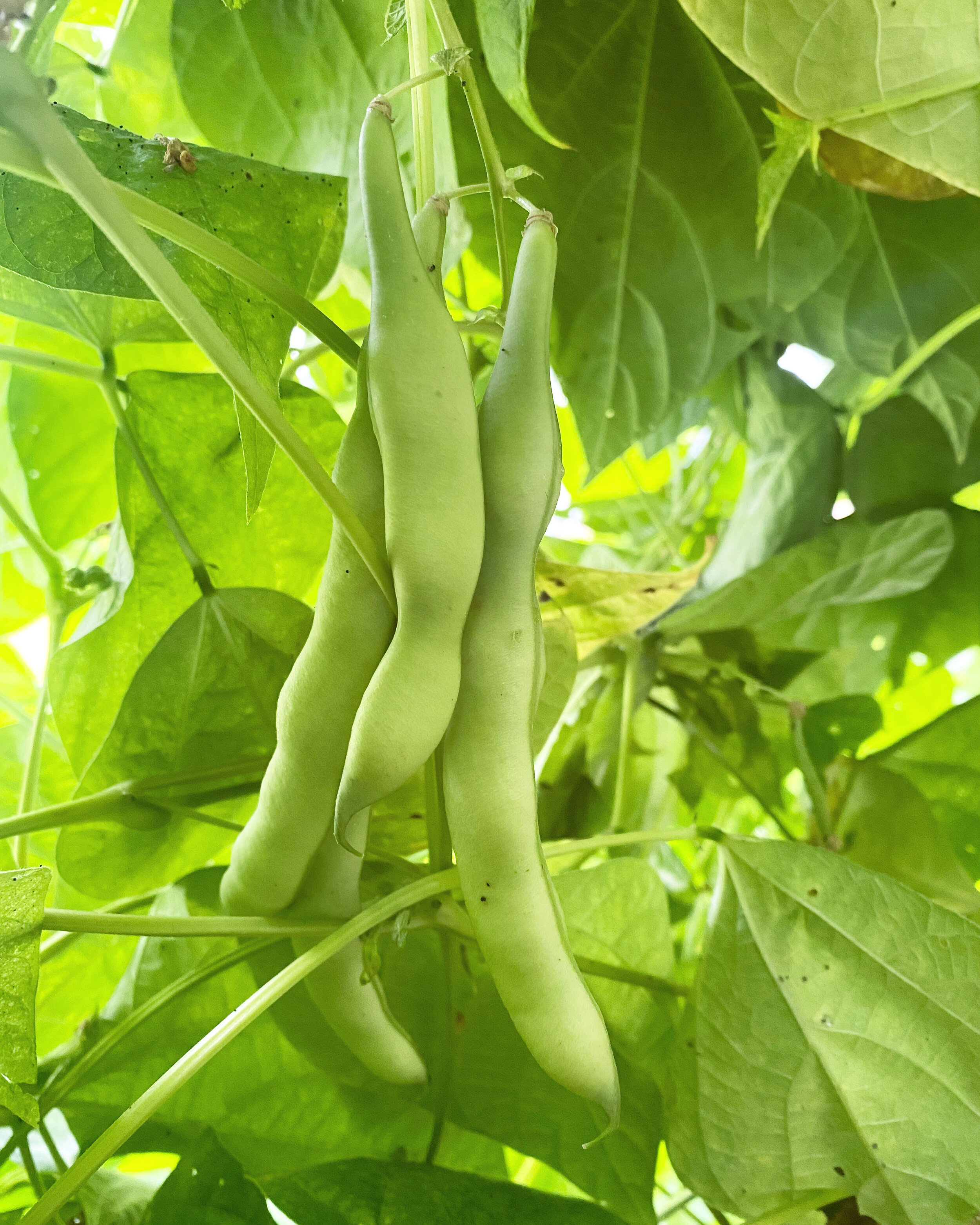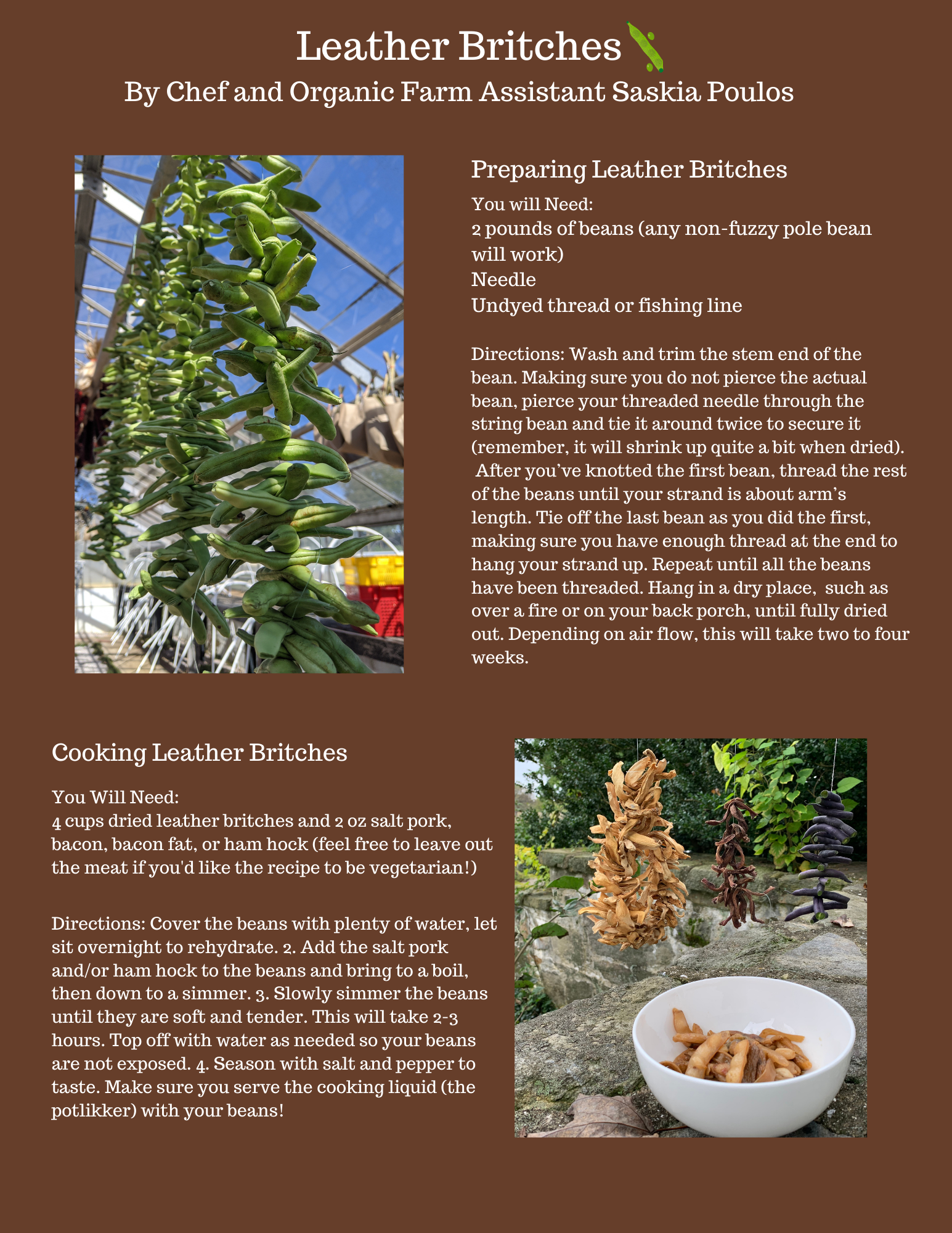Leather Britches: An Appalachian Culinary Tradition
Emily Ellis
In earlier decades in Southern Appalachia, you’d be hard-pressed to find a porch or fireplace that wasn’t decorated with long, swaying strings of dried greasy beans in the autumn months. Leather britches - so named because of their brown, shriveled appearance - are pole beans preserved on long threads, and are unique to our region. They’ve inspired classic fiddle tunes, have appeared in many holiday dinners, and are named as a favorite nostalgia food of Appalachian celebrities.
Photo by Saskia Poulos
Leather britches and other bean varieties were a sustainable, affordable source of protein for people living in Appalachia, and legumes continue to contribute to food security for people around the world today: they are highly nutritious, can be stored for a long time without losing their nutritional value, require less water than other protein sources to grow, and are nitrogen-fixers, helping in the fight against climate change. The theme for World Food Day this year is “Our actions are our future,” and one simple, delicious action we can all take to ensure a more sustainable future is by eating more beans!
Oak Spring’s Biocultural Conservation Farm, which produces many food crops that are significant to Appalachia, grows several varieties of heirloom string beans, and OSGF chef Saskia Poulos made much of that harvest into leather britches in 2020. To celebrate World Food Day this year, she demonstrates how to prepare and cook with this sustainable protein source in the video below. To read more about leather britches, keeping scrolling!
Back before canning and modern refrigeration was readily available, drying was the most popular and affordable method for preserving produce in southern Appalachia, helping to stretch harvests through the long winter months. It wasn’t always easy or financially feasible to get enough glass canning jars to store all your winter food, but with leather britches, all you needed was a needle and string to preserve your bean harvest.
Photo by Caitlin Etherton
Leather britches are traditionally made from heirloom greasy bean varieties such as Lazy Wife, which originated in North Carolina and is one of the beans we grow at the BCCF, but any non-fuzzy string bean will work (you can also learn more about the BCCF and leather britches in this article from Country Zest and Style magazine).
While food historians aren’t certain who first came up with the idea of drying beans in this way, most agree that it likely originated from a preservation method practiced by the Cherokee people. Early German settlers in the area also dried beans on strings, and may have brought the practice to the region from their home country.
Regardless of who first came up with the idea, the result was an extremely tasty, long-lasting and nutritious food that could last for years if stored properly. Even when other methods of preservation became readily available, many people in Appalachia continued to make leather britches every year: when dried and rehydrated, the flavor of the bean concentrates, resulting in a rich, beefy flavor.
Traditionally, leather britches are served with hot cornbread, which really soaks up the delicious potlikker. Below is Chef Saskia’s recipe, adapted from traditional Appalachian recipe methods:



